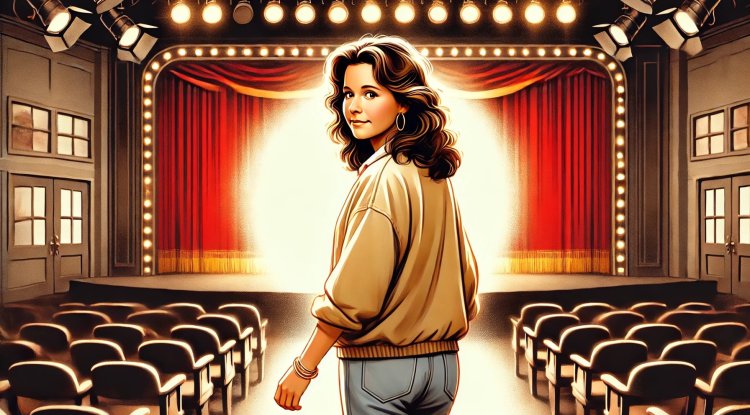Autobiographical Elements in Little Women – Louisa May Alcott’s Life in Fiction
"Little Women" of Louisa May Alcott is a semi-autobiographical novel inspired by her own life and experiences. The story narrates the lives of the four March sisters—Meg, Jo, Beth, and Amy—who matured in New England during the Civil War, just as Alcott did with her three sisters in real life. Perhaps even more than with other primary characters, Alcott's personality combines with Jo March's independence, ambition, and strong will in her dream of becoming a literary success. Alcott was a tomboy, resisting traditional female roles for much of her life, and worked extremely hard to support her family—quite in character with Jo. Alcott's struggles, aspirations, and relationships articulate in this novel her own life and that makes Little Women an intensely personal and realistic portrait of womanhood in the 19th century.

Little Women is a coming-of-age novel written by the American novelist Louisa May Alcott that was originally published in two volumes in 1868 and 1869. The story follows the lives of the four March sisters—Meg, Jo, Beth, and Amy—and details their passage from childhood to womanhood. Loosely based on the lives of the author and her three sisters, it is classified as an autobiographical or semi-autobiographical novel. "wikipedia - Little_Women "
Little Women is loosely based on Louisa May Alcott’s family and life. By analyzing the six main characters and their real-life counterparts in Little Women, a reader can begin to develop an understanding of the author’s own life.
The Four March Sisters
The Alcott girls’ life spills over into many of the details in the novel. The Alcott children gave their Christmas meal to a poor family just like Alcott describes the March children doing in Chapter Two: A Merry Christmas. The Alcott girls enjoyed putting on plays just as we see the March girls do at the beginning of the novel. And Louisa May Alcott won money in a writing contest when she was young just like her fictional counterpart Jo.
Unlike the idealized children of the literature of the era, the March children squabble, make mistakes, and have character flaws. The multi-dimensional characterization of the March girls reveals Alcott’s close relationship to her own sisters and the love she held for them despite the flaws that reveal their humanity.
Meg March
Meg the oldest March girl is based on Alcott’s oldest sister Anna. Like Anna, Meg was attracted to the lifestyle of wealth and luxury and yet in both reality and fiction the oldest sister marries a poor man.
Jo March
Jo is Louisa May Alcott. Alcott’s intellectual interests often made it easier for her to see herself as a peer to boys than to other girls, hence the masculine traits of her character, Jo. Like Jo, Alcott is most happy when writing. Alcott was very upset when her sister Anna got married and moved away from the family just as Jo is upset by Meg’s marriage.
Beth March
Beth is based on Alcott’s own sister Elizabeth who died young just as Beth does in Little Women. Elizabeth loved music and her portrait was kept near the family piano. Beth her fictional counterpart loved music deeply.
Amy March
Amy’s name is based on the same letters as Alcott’s sister May. May was very artistic just like her character Amy. Louisa May insisted that her sister May travel to Europe to improve her artistic skills. May, like Amy, marries a wealthy man. However, unlike Amy the man is not a close-friend of the family like Laurie.
Marmee
Marmee is much like Alcott’s own Abba. Abba and Alcott were both dark-haired and strong-willed and caused Bronson Alcott to lament his inability to “vanquish the mother fiend and her daughter.” Yet Abba was the one who kept the family together and always supported her husband and his ideals despite his inability to adequately provide for his family.
Like the character she inspired, Abba always strove to do her duty and to provide charity. No matter the situation she believed in letting love come first.
Mr. March
Mr. March is never a significant character in the story. For most of the novel, he is away at war and when he returns, he disappears into a world of his own affairs. Mr. March is an absentee father who doesn’t figure in the lives of the March girls except in an idealized fantasy when they long for more than what they have.
Alcott’s own father, Bronson Alcott, was not an emotionally nurturing man and failed to adequately provide for the household needs. When Alcott was young, the family was left in poverty after Bronson’s failed attempt at a utopian society known as Fruitlands. The March’s are poverty-stricken due to a failed attempt of Mr. March to help a friend.
Bronson Alcott caused an emotional division between himself and Alcott by attempting to mold his willful, expressive daughter into a more temperate and ‘angelic’ personality. As a result of this emotional divide, Alcott was never able to write a believable father figure. She solved this problem in Little Women by sending Mr. March away and marginalizing him when he returns.
Little Women was written out of financial expediency. While Louisa May Alcott appreciated the financial success of the novel and the comfort it bought her family, she was disappointed that her readers found it so much more compelling than her adult material. Yet millions of her fans can be grateful that Alcott was mercenary enough to mine her own life for the rich details that make Little Women her most popular novel.
What's Your Reaction?



















